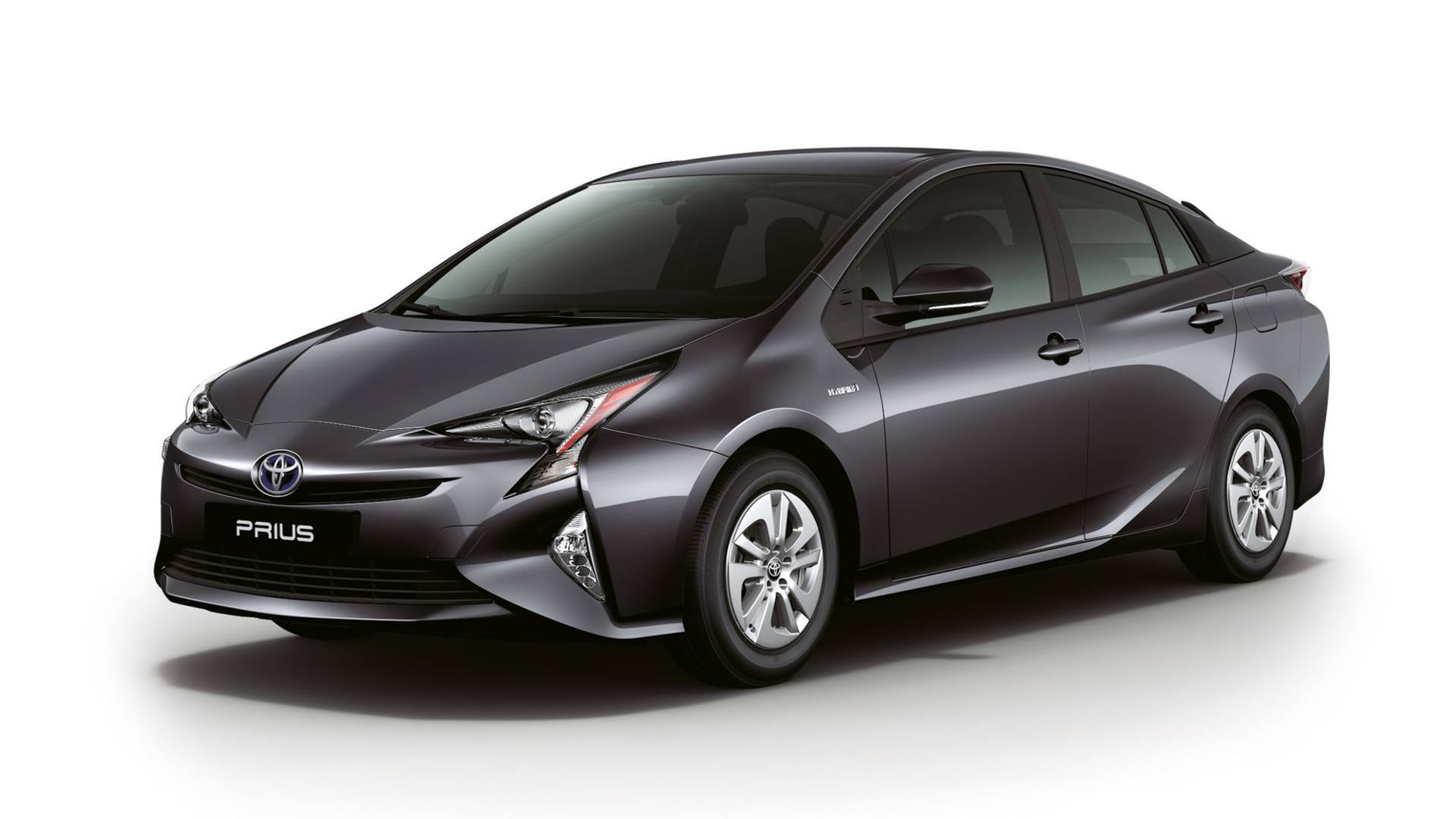The Toyota Prius has been a game changer in the automotive world since its launch in 1997. As the world’s first mass-produced hybrid vehicle, the Prius represents a major milestone in the evolution of transportation, combining gasoline and electric power to create a more fuel-efficient and environmentally friendly driving experience. Over the years, it has become synonymous with hybrid technology, setting a benchmark for other automakers and leading the way in the industry’s push towards cleaner, greener vehicles. This article explores the origins, technological innovations, and cultural impact of the Toyota Prius, examining how it has revolutionized the automotive landscape and continues to shape the future of hybrid and electric vehicles.
The Origins of the Prius
In the early 1990s, environmental concerns about the growing impact of carbon emissions and global oil dependence began to take center stage. At this time, Toyota saw an opportunity to address these challenges through innovation. The company’s engineers were tasked with creating a new type of car—one that could reduce fuel consumption and emissions without sacrificing performance. This led to the development of a hybrid electric vehicle (HEV), which would use both a traditional internal combustion engine and an electric motor.
The Prius project, known internally as “G21,” was Toyota’s bold response to this environmental challenge. The goal was clear: develop a car that could offer 50% better fuel efficiency than conventional vehicles without any compromises in usability or comfort. After years of research, development, and refinement, the first-generation Prius was unveiled in Japan in 1997. It was a modest sedan, but what made it truly revolutionary was what lay beneath the hood—a hybrid powertrain that combined a gasoline engine with an electric motor, powered by a nickel-metal hydride (NiMH) battery. This groundbreaking combination marked the beginning of the hybrid era in automotive history.
Hybrid Technology: How the Prius Works
The Prius’s hybrid system, known as the Toyota Hybrid System (THS), was the first of its kind in a commercially available vehicle. It integrated two power sources—an internal combustion engine (ICE) and an electric motor—that could work independently or together, depending on driving conditions. This dual-power approach enabled the Prius to maximize fuel efficiency while minimizing emissions.
FREE: Quickly identify and understand problems with your vehicle 🚘
CLICK HEREKey Components of the Toyota Hybrid System
- Gasoline Engine: The Prius is powered by a four-cylinder gasoline engine that operates similarly to a traditional engine but is smaller and more efficient. In most models, the engine runs on the Atkinson cycle, which improves fuel efficiency at the expense of reduced power output, a compromise mitigated by the electric motor.
- Electric Motor: The electric motor works alongside the gasoline engine to provide extra power when needed. During acceleration, the motor provides additional torque, reducing the load on the gasoline engine and improving fuel efficiency.
- Battery Pack: Early Prius models were equipped with a nickel-metal hydride (NiMH) battery, which stores energy recovered through regenerative braking and excess energy from the engine. Later models, especially plug-in hybrids, use lithium-ion (Li-ion) batteries, which offer better energy density and lighter weight.
- Power Split Device: This mechanical device connects the engine, motor, and wheels, allowing the Prius to seamlessly switch between gasoline power, electric power, or a combination of both. This ensures smooth transitions and maximum efficiency in various driving conditions.
- Regenerative Braking: One of the Prius’s most innovative features is its regenerative braking system. When the driver applies the brakes, the electric motor acts as a generator, converting the vehicle’s kinetic energy into electrical energy and storing it in the battery. This process not only recharges the battery but also reduces wear on the braking system.
Modes of Operation
The Prius operates in three primary modes, depending on the driving situation:
- Electric Vehicle (EV) Mode: In low-speed, short-distance driving, the Prius can run solely on electric power. This mode is particularly useful in stop-and-go traffic or urban environments, where the electric motor reduces fuel consumption and emissions to zero.
- Hybrid Mode: In this mode, the gasoline engine and electric motor work together to provide optimal power and efficiency. The system constantly monitors the driving conditions and adjusts the power distribution between the two sources, ensuring the best balance of performance and fuel economy.
- Regenerative Braking: As mentioned, when the driver decelerates or applies the brakes, the electric motor switches to generator mode, capturing kinetic energy and converting it into electricity to recharge the battery. This feature helps extend the battery’s charge and reduce the load on the engine.
Fuel Efficiency and Emissions
The Prius’s hybrid system allows for significant reductions in fuel consumption and greenhouse gas emissions. The first-generation Prius, launched in Japan in 1997, achieved a fuel economy rating of approximately 46 miles per gallon (MPG), which was impressive for its time. Subsequent generations have improved upon this, with newer models boasting upwards of 50-56 MPG, depending on driving conditions and the specific model.
The combination of the electric motor and efficient gasoline engine also significantly reduces tailpipe emissions. In many cases, the Prius produces half the emissions of a comparable gasoline-only vehicle, making it a popular choice for environmentally conscious consumers. Its ultra-low emissions rating also allows it to meet stringent regulatory requirements in markets like California, where air quality standards are especially tough.
Global Success and Expansion
The success of the Prius in Japan prompted Toyota to introduce the model globally. In 2000, the Prius was launched in North America and Europe, where it was met with enthusiasm from early adopters, environmentalists, and tech-savvy consumers. Despite initial skepticism about the viability of hybrid technology, the Prius quickly gained a loyal following.
The Second Generation (2003-2009)
The second-generation Prius, released in 2003, was a major leap forward for the model. With a more aerodynamic design, improved hybrid system, and larger interior, it appealed to a broader range of consumers. The new Prius adopted a distinctive hatchback shape, which not only improved fuel efficiency through better aerodynamics but also increased cargo space, making it more practical for everyday use.
The second-generation model also introduced a higher-capacity battery and a more powerful electric motor, which improved overall performance without sacrificing fuel efficiency. It became an instant hit, especially in North America, where environmental concerns and rising fuel prices drove demand for fuel-efficient vehicles.
During this period, the Prius cemented its status as a cultural icon. It became the car of choice for celebrities, environmental activists, and consumers who wanted to make a statement about their commitment to sustainability. The Prius also earned numerous accolades, including being named the 2004 North American Car of the Year and winning several “Green Car of the Year” awards.
The Third Generation (2009-2015)
The third-generation Prius, introduced in 2009, continued to build on its predecessor’s success. It featured a more refined design, improved fuel efficiency, and even lower emissions. The hybrid system was further optimized, allowing the car to achieve up to 50 MPG in combined city and highway driving.
One of the most notable innovations in the third-generation Prius was the introduction of the “EV” button, which allowed drivers to switch to electric-only mode for short distances. This feature was particularly useful for urban drivers who could reduce fuel consumption even further in stop-and-go traffic.
Toyota also expanded the Prius lineup during this time, introducing new variants such as the Prius v (a larger wagon version with more cargo space) and the Prius c (a smaller, more affordable version aimed at younger, budget-conscious buyers). These new models helped broaden the appeal of the Prius family, allowing more consumers to experience the benefits of hybrid technology.
The Fourth Generation (2015-Present)
In 2015, Toyota launched the fourth-generation Prius, marking a significant evolution in both design and technology. Built on Toyota’s New Global Architecture (TNGA) platform, the fourth-generation Prius offered improved handling, a lower center of gravity, and a more rigid body structure. These changes resulted in a more engaging driving experience, addressing one of the few criticisms of previous Prius models.
The fourth-generation model also featured a more futuristic design, with sharp lines, a sleek profile, and advanced aerodynamics that improved fuel efficiency to new heights. The Prius continued to set the standard for hybrid vehicles, achieving an impressive 54 MPG in city driving and 50 MPG on the highway.
In addition to its performance improvements, the fourth-generation Prius incorporated cutting-edge technology, including a larger touchscreen interface, advanced driver-assistance systems, and Toyota’s Safety Sense package, which includes features like adaptive cruise control, lane departure warning, and automatic emergency braking.
Toyota also introduced the Prius Prime, a plug-in hybrid version that offers a larger battery pack and the ability to drive on electric power alone for up to 25 miles. The Prius Prime combines the best of both worlds—an electric vehicle for short trips and a hybrid for longer journeys—giving consumers even more flexibility and fuel savings.
The Cultural Impact of the Prius
Beyond its technological achievements, the Prius has had a profound cultural impact. It has become more than just a car; it is a symbol of environmental awareness, innovation, and social responsibility. When celebrities like Leonardo DiCaprio and Cameron Diaz were spotted driving Priuses in the early 2000s, the car quickly became a status symbol for eco-conscious individuals. It signaled that the driver cared about the environment and was willing to embrace new technology to reduce their carbon footprint.
The Prius also played a key role in shifting public perception of hybrid vehicles. Before its introduction, many consumers were skeptical of hybrids, concerned about their performance, reliability, and practicality. The Prius proved that hybrids could be just as reliable and easy to use as traditional gasoline-powered cars, while offering significant environmental and economic benefits.
Its popularity helped pave the way for other hybrid and electric vehicles, as automakers realized there was a growing market for eco-friendly cars. The Prius’s success also encouraged governments to offer incentives for hybrid and electric vehicle purchases, further accelerating the adoption of green technology.
The Prius and the Future of Hybrids
As the automotive industry moves towards electrification, the Prius continues to play a pivotal role. While fully electric vehicles (EVs) are gaining popularity, hybrids like the Prius offer a practical alternative for consumers who are not yet ready to make the switch to all-electric driving. The Prius’s combination of fuel efficiency, low emissions, and affordability makes it an attractive option for drivers who want to reduce their environmental impact without sacrificing convenience or range.
Toyota has announced plans to expand its lineup of electrified vehicles, including hybrids, plug-in hybrids, and fully electric models. While the Prius may no longer be the only hybrid on the market, it remains a leader in the segment and a symbol of Toyota’s commitment to sustainability and innovation.
Conclusion
The Toyota Prius revolutionized the automotive industry by pioneering hybrid technology and setting a new standard for fuel efficiency and environmental responsibility. Since its debut in 1997, the Prius has continually evolved, incorporating cutting-edge technology and design innovations that keep it at the forefront of the hybrid market. Its cultural impact, environmental benefits, and role in shaping the future of transportation cannot be overstated.
As the world moves towards a more sustainable future, the Prius will undoubtedly remain an icon of green technology and a symbol of what can be achieved when innovation meets environmental stewardship. With over two decades of success and millions of satisfied drivers worldwide, the Toyota Prius has truly earned its place as a pioneer in the hybrid revolution.


Leave a Reply